written by Mary L. Peachin with photography by Rod Klein and Mary Peachin
Sep 2004, Vol. 8 No. 11
 Like skydivers, we jumped off the stern of the Caribbean Explorer II descending into one of Saba’s premier dive sites, Eye of the Needle. Hand over hand, we descended on a smart line from the boat to the mooring line reaching a stunning pinnacle in 95 feet of water. The Eye is covered with sponges, fan and whips and 6-8 foot reef sharks cruise in the surrounding swift, swirling current.
Like skydivers, we jumped off the stern of the Caribbean Explorer II descending into one of Saba’s premier dive sites, Eye of the Needle. Hand over hand, we descended on a smart line from the boat to the mooring line reaching a stunning pinnacle in 95 feet of water. The Eye is covered with sponges, fan and whips and 6-8 foot reef sharks cruise in the surrounding swift, swirling current.
While we explored the pinnacle with a 100-feet of visibility, three instructors hung in the blue away from the bommie making sure air divers didn’t descend beyond 130 feet and Nitrox divers stayed above their maxiumum of 110 feet. While the water was a pleasant 81-degrees, everyone wore lycras or wetsuits, if not for warmth, to avoid jelly tentacles.
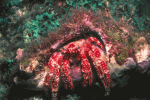 < them. find to way best the is boat dive live-aboard and Rock, Diamond pinnacle, deep another Needle are were they there—like ones big if But, Caribbean. in rare becoming opportunity that but stuff, bigger with hopes always One bow. across skipping fish flying saw we Unfortunately flyers. of plenty there sure for Caribbean, Northeastern Antilles Dutch waters legion be alleged gurnards Flying sites. Saba’s one right skip than rather track back let’s But>
< them. find to way best the is boat dive live-aboard and Rock, Diamond pinnacle, deep another Needle are were they there—like ones big if But, Caribbean. in rare becoming opportunity that but stuff, bigger with hopes always One bow. across skipping fish flying saw we Unfortunately flyers. of plenty there sure for Caribbean, Northeastern Antilles Dutch waters legion be alleged gurnards Flying sites. Saba’s one right skip than rather track back let’s But>
The 120-foot Caribbean Explorer, originally Peter Hughes’ Sea Dancer, has plied the waters of the Dutch Antilles for 25 years. The boat, the only liveaboard offering weekly trips in this part of the Caribbean, was refurbished in 2002 including an expanded dive deck.
 Ten of us boarded the craft at St. Maarten’s Bobby’s Marina to dive the three picturesque islands of Saba, St. Eustatius and St. Kitts. The crew waited until 10 P.M. for the last diver to arrive, before the three-hour steam to Saba. The rest of us (Texans, southerners and west coasters, ranging from mid-forties to mid-seventies, with no thongs or muscle flexors present) hit the sack, awakening the next morning to a breathtaking view of volcano-peaked Saba.
Ten of us boarded the craft at St. Maarten’s Bobby’s Marina to dive the three picturesque islands of Saba, St. Eustatius and St. Kitts. The crew waited until 10 P.M. for the last diver to arrive, before the three-hour steam to Saba. The rest of us (Texans, southerners and west coasters, ranging from mid-forties to mid-seventies, with no thongs or muscle flexors present) hit the sack, awakening the next morning to a breathtaking view of volcano-peaked Saba.
A blowing conch summoned us to our first dive briefing. Standing in front of the underwater camera table, head divemaster Bacchus Freedman told us to “respect this table, keep your stuff off, no crumbs.” Only the oxygen analyzer (used by Nitrox divers) was exempt. His safety lectures were longgg, informative, accurate, and humorous. Yet, he strictly enforced boat’s rules and was as serious as a pontificating professor. Occasionally impatient divers harked, “let’s go diving.”
 Sifting our hands through “hot” sand created by an ancient lava flow at Ladder Labyrinth was a unique experience. Nearby, we watched a peacock flounder bury itself. Several green turtles flapped by, red-lipped blennies dug in and a few large spotted drums swam by. I pointed out a spotted snake eel to a nearby diver, who took out a slate and jokingly wrote “rattle?” Hanging at 15 feet to offload nitrogen, we watched moon jellies float by and were amazed when a large barracuda devoured a blue tang in a single gulp. Made me wonder how Nemo’s friend Dory survived the long journey to Sydney.
Sifting our hands through “hot” sand created by an ancient lava flow at Ladder Labyrinth was a unique experience. Nearby, we watched a peacock flounder bury itself. Several green turtles flapped by, red-lipped blennies dug in and a few large spotted drums swam by. I pointed out a spotted snake eel to a nearby diver, who took out a slate and jokingly wrote “rattle?” Hanging at 15 feet to offload nitrogen, we watched moon jellies float by and were amazed when a large barracuda devoured a blue tang in a single gulp. Made me wonder how Nemo’s friend Dory survived the long journey to Sydney.
At Torrens Point, after swimming through a dimly lit lava tube, my buddy and I emerged near the towering rock sheer cliff of Saba. Retreating from the exit, breaking waves greeted us. We rode the surge dodging waves as we made our way into deeper water.
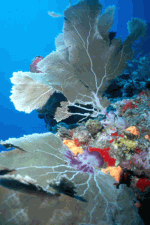 The underwater terrain makes Saba’s diving deeper. Dives on Statia and St. Kitts were in the 30-80 foot range, without walls. The length of the dive was stated as an hour, but especially when group led, the length of the dive was more like 45-50 minutes. There were no serious camera buffs onboard, and with four to five dives a day, there were no complaints about the shorter dive limits.
The underwater terrain makes Saba’s diving deeper. Dives on Statia and St. Kitts were in the 30-80 foot range, without walls. The length of the dive was stated as an hour, but especially when group led, the length of the dive was more like 45-50 minutes. There were no serious camera buffs onboard, and with four to five dives a day, there were no complaints about the shorter dive limits.
Before diving Man O’War Shoals, named for a tangle of ships that sank in the shallows, Bacchus warned us about a cave whose entrance was covered with black coral. “Don’t enter it. We don’t want the coral harmed and you aren’t technically equipped.” At Tedran and Tent walls (with a night dive on shallower Tent Reef), the pristine walls held spectacular sponges. While I saw many species of fish, only reef and nurse sharks were of any size, though a nice school of jacks once circled during a night dive.
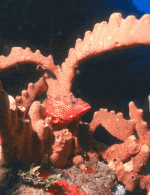 We had planned to depart Saba after an interesting land tour, but the immigration official was “out to lunch” and no one could sign-off on our departure. So, the next morning, we made two morning dives then, after getting permission to depart, we ate lunch and the boat fired up for the 90-minute trip to Statia.
We had planned to depart Saba after an interesting land tour, but the immigration official was “out to lunch” and no one could sign-off on our departure. So, the next morning, we made two morning dives then, after getting permission to depart, we ate lunch and the boat fired up for the 90-minute trip to Statia.
Tankers waiting to load or unload crude surround Statia’s port. Its verdant green volcanic peak looks like Washington State’s chopped off Mt. St. Helen’s. “The diving in Statia is very different, some of my favorite sites are here” Bacchus told us. St. Eustatius Marine Park rules require that a ranger dive with the group, so ranger Pete Esteban led the way. “No gloves, no touching,” he said. “If that photograph is so important to you, think of the damage you might cause the reef while you are shooting.”
Wreck City is the name of a site where a freighter and tug were destroyed by a 1986 hurricane. Stingrays, one missing a tail, covered the sand. Watching their blinking gills above curious eyes buried in the sand was great fun. Mushroom Gardens is “jaw-dropping,” said Bacchus, “it’s a rock star dive site. It’s seafan insanity. Expect a bit of a breeze(current). The pool is open.” We descended to find a peacock flounder camouflaged in the sand, and two large nurse sharks resting in a sand channel. The landscape consists of winding mini-canyons filled with schools of southern sennet barracuda.
With only ten mouths to feed, the crew gave us an extra, much-appreciated 30 minutes to sleep. After a 7 o’clock wakeup and breakfast, the first dive was at 8:15 followed by others at 10:15, 1:15 and 4 PM. There was a 6 o’clock dusk dive or a 7:15 night dive. Dinner was always served at 6 PM. Chef Merhay Tesfa Endrias, a cheerful relaxed soul, was amazing, in spite of it being his first week on the job.
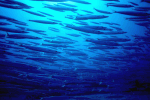 He served “al dente” vegetables, subtle seasonings, and attractively garnished plates. We chewed on “to die for” barbecue ribs, his salmon and chicken were cooked to perfection. The food was some of the best liveaboard food I’ve tasted. Breakfast was cooked to order, anything you wanted. Lunch was ordinary fare: a sandwich, tuna salad, plain ol’ hot dogs and hamburgers. The killer—calorie-wise—was his baking. Hot carrot cake was offered after a morning dive, tiramisu for dinner, sundaes or banana splits in between. And, the service was excellent. Premium alcohol, wine, and beer were complimentary.
He served “al dente” vegetables, subtle seasonings, and attractively garnished plates. We chewed on “to die for” barbecue ribs, his salmon and chicken were cooked to perfection. The food was some of the best liveaboard food I’ve tasted. Breakfast was cooked to order, anything you wanted. Lunch was ordinary fare: a sandwich, tuna salad, plain ol’ hot dogs and hamburgers. The killer—calorie-wise—was his baking. Hot carrot cake was offered after a morning dive, tiramisu for dinner, sundaes or banana splits in between. And, the service was excellent. Premium alcohol, wine, and beer were complimentary.
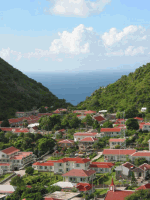 < to the and One we of be than back ship. slave sunken on ballast as used thought nearby, scattered rocks river has anchor century-old large 1800?s. dating anchors 30 collection holds flow, lava encrusted an Aweigh, Anchors diving. good Statia’s given disappointment planned, earlier day arriving Kitts St. passage hour made anchor, couldn?t Since stolen. been had fees, diving by maintained purchased moorings, five Statia, At>
< to the and One we of be than back ship. slave sunken on ballast as used thought nearby, scattered rocks river has anchor century-old large 1800?s. dating anchors 30 collection holds flow, lava encrusted an Aweigh, Anchors diving. good Statia’s given disappointment planned, earlier day arriving Kitts St. passage hour made anchor, couldn?t Since stolen. been had fees, diving by maintained purchased moorings, five Statia, At>
Here, I was able to escape the group and do some underwater exploring on my own. A school of barracuda hovered, yellowheaded jawfish peeked out of sandy holes. A golden high hat, similar to the spotted drum, ducked behind a rock. A baby hawksbill turtle appeared oblivious to me.
Macro lovers and wreck divers liked St. Kitts’ diving (visibility was about 50-feet). We dived the River Toire, a ship that sank during a hurricane in the 1980’s, and the Talata, where encrusted concrete cylinders extruding rotted wood were thought to have been used by the slaves to crush sugar cane.
vspace=”10″>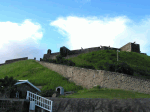 During our final dive, we were greeted by a 5-foot moray swimming in open water, an octopus, found by Captain Pete on the sand, pulsated flashing colors before swimming off to his crevice in the wreck as if to say goodbye as we ascended to the boat.
During our final dive, we were greeted by a 5-foot moray swimming in open water, an octopus, found by Captain Pete on the sand, pulsated flashing colors before swimming off to his crevice in the wreck as if to say goodbye as we ascended to the boat.
And those mystical gurnards, they must still be flying elsewhere. We never saw any.
If you go: CEX II alternates departure (either St. Maarten or St. Kitts) each week. The climate in December was sunny (80 degrees) and dry except for “grains” or short, strong downpours. Water was 81 degrees. The cost of the week trip is $1,145, plus a $3 a dive charge in Saba and $15 yearly fee in Statia. There are no dive fees in St. Kitts. The boat offers land tours for an additional fee.
Call(800) 322-3577 or 1.903.887.8521 info@explorerventures.com or www.explorerventures.com
